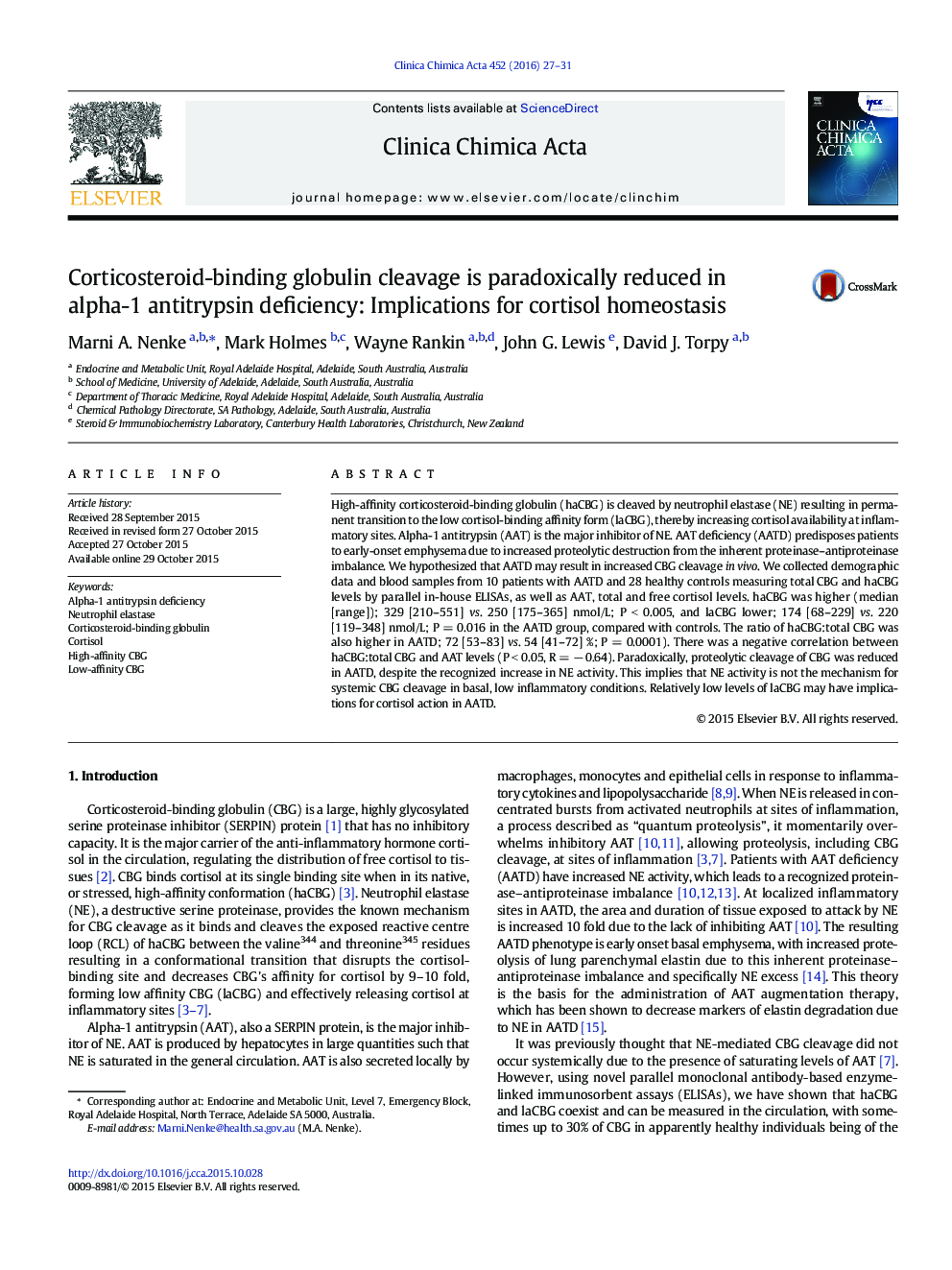| Article ID | Journal | Published Year | Pages | File Type |
|---|---|---|---|---|
| 8310480 | Clinica Chimica Acta | 2016 | 5 Pages |
Abstract
High-affinity corticosteroid-binding globulin (haCBG) is cleaved by neutrophil elastase (NE) resulting in permanent transition to the low cortisol-binding affinity form (laCBG), thereby increasing cortisol availability at inflammatory sites. Alpha-1 antitrypsin (AAT) is the major inhibitor of NE. AAT deficiency (AATD) predisposes patients to early-onset emphysema due to increased proteolytic destruction from the inherent proteinase-antiproteinase imbalance. We hypothesized that AATD may result in increased CBG cleavage in vivo. We collected demographic data and blood samples from 10 patients with AATD and 28 healthy controls measuring total CBG and haCBG levels by parallel in-house ELISAs, as well as AAT, total and free cortisol levels. haCBG was higher (median [range]); 329 [210-551] vs. 250 [175-365] nmol/L; P < 0.005, and laCBG lower; 174 [68-229] vs. 220 [119-348] nmol/L; P = 0.016 in the AATD group, compared with controls. The ratio of haCBG:total CBG was also higher in AATD; 72 [53-83] vs. 54 [41-72] %; P = 0.0001). There was a negative correlation between haCBG:total CBG and AAT levels (P < 0.05, R = â 0.64). Paradoxically, proteolytic cleavage of CBG was reduced in AATD, despite the recognized increase in NE activity. This implies that NE activity is not the mechanism for systemic CBG cleavage in basal, low inflammatory conditions. Relatively low levels of laCBG may have implications for cortisol action in AATD.
Related Topics
Life Sciences
Biochemistry, Genetics and Molecular Biology
Biochemistry
Authors
Marni A. Nenke, Mark Holmes, Wayne Rankin, John G. Lewis, David J. Torpy,
